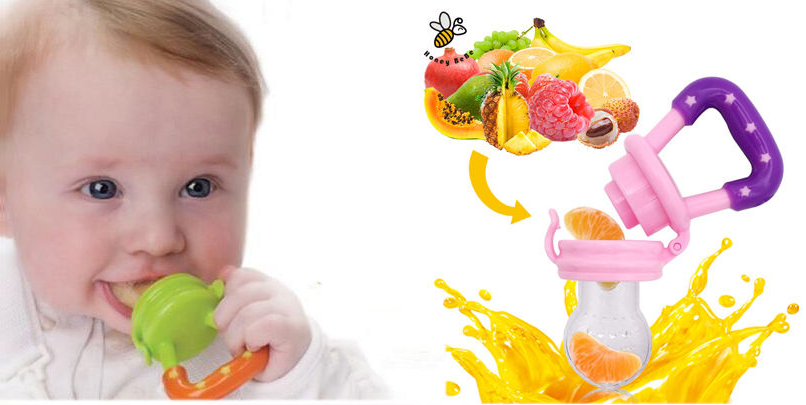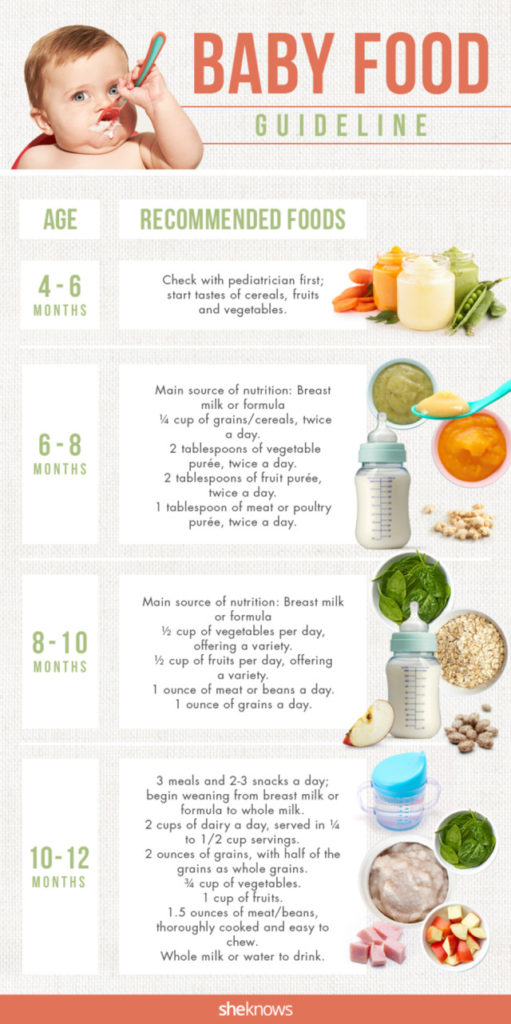
Feeding baby since birth has been a relatively simple task with two choices: breast milk, or formula.
When it comes time to start thinking about introducing solids, many parents may have a sense of trepidation or uncertainty of where to begin.
There are a variety of ways to approach your baby’s first tantalizing taste, and different philosophies on feeding baby, but it does not have to be a fearful moment for mom and dad. Of course, a conversation with your pediatrician is the best action to take before baby’s mealtime, but it’s always great to research your options, and be ready with questions. Here is some food for thought when planning baby’s first foods:
When to Start:
Research has recently changed the recommendation on the best age to introduce solids. According to the American Academy of Pediatrics, the best age to start is six months. In addition, there several behaviors and milestones that your little one should be meeting before you dish out the deliciousness. If your baby is able to sit up unassisted, and hold their head steady, they may be ready to try solid foods. Sitting unassisted and great head control will help reduce risks of choking. If your baby is still tongue-thrusting, or pushing food back out of their mouth and they are unable to move food to their throat to swallow, then consider talking to your pediatrician before continuing to move forward with solids.
What to Start With:
Ever heard the old adage, “food before one, just for fun,” — here is more advice when deciding what & when to feed baby. Learning to eat is a process, and your little one craves your guidance on this journey. Since most of their nutrition is still coming from breastmilk or formula, they are simply learning and sampling tasty new foods along the way.
A cereal, such as oatmeal or rice can be an easy transition into solids. Most brands can be mixed with breastmilk or formula, a flavor that baby can easily recognize which makes spoon-feeding more palatable for them. From there, move to pureed vegetables, and fruits, adding in meats, and other foods next.
Some parents prefer to start with vegetables first to help baby’s palate adjust before moving into sweeter foods such as fruits.
How to Start:
Now that your baby is meeting feeding milestones, and your pediatrician has given the green light, you can start serving up infant cuisine.
An optimal way to introduce foods is to start with one food at a time, and continue with that food for a couple of days. The reasoning behind this is that you can see how baby tolerates it, and note any reactions that may be allergic.
You may notice changes in your baby’s poopy diapers. Things can get somewhat colorful in output but this is normal! You can always call your pediatrician with any concerns.
The process if introducing foods can be daunting, but try and relax and enjoy your baby’s first meals! Always be sure to have the camera on hand to capture any silly faces baby might make!

What else?
A popular trend in the world of feeding your infant is called Baby Led Weaning. The thought behind this feeding philosophy is that the baby feeds themselves- no purees or “baby” food involved. Starting between six to eight months, you offer your baby soft boiled or mashed food, and they essentially learn to eat by gumming the food, and swallowing. In order for this to be the route for you, your baby has to be able to hold food, and bring it to their mouth. Baby Led Weaning is considered an alternative way to feed your baby though it is more naturally similar to how older children and adults eat.

